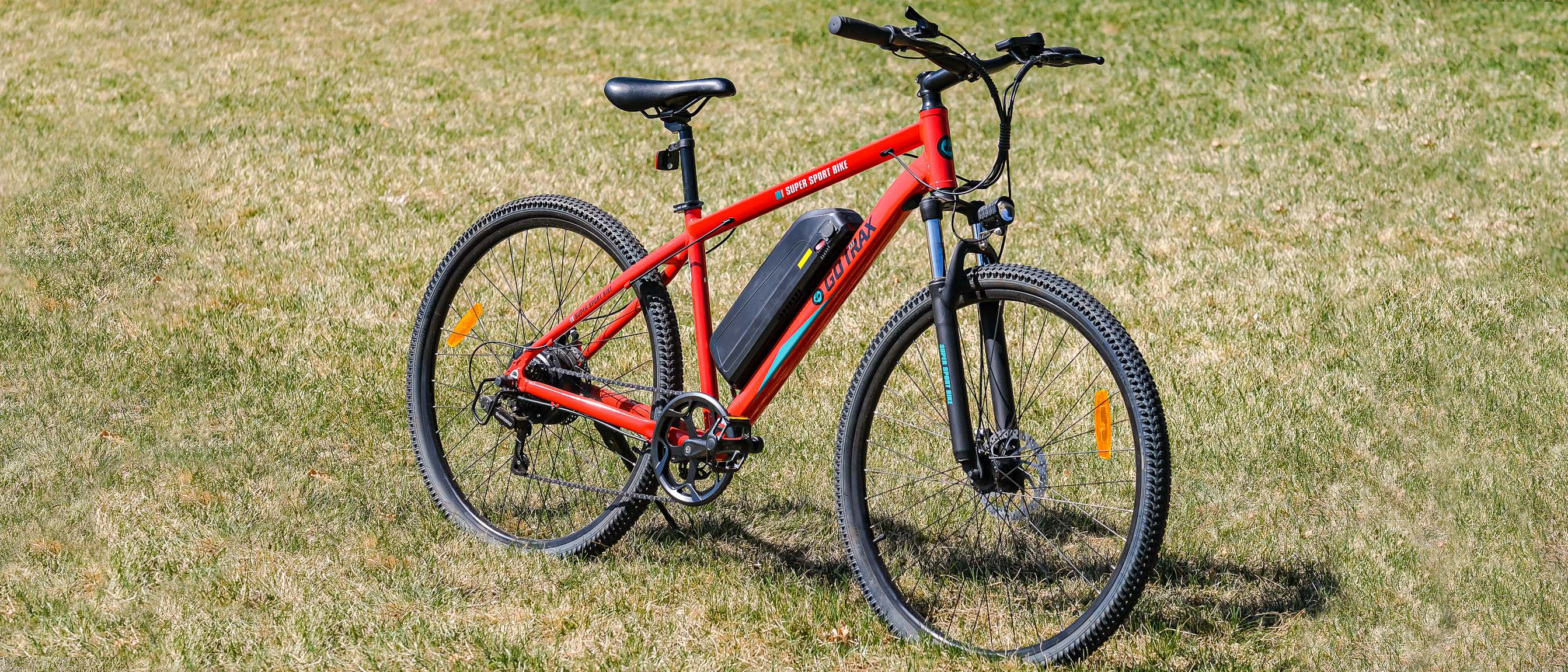Tom's Guide Verdict
While the GoTrax Traveler is a cheap electric bike, it has far too many compromises. There are a number of inexpensive electric bikes that offer far more for the same price or less.
Pros
- +
Pedal assist (in High setting only) feels powerful once you’re up to speed
Cons
- -
Overpriced
- -
Old technology
- -
Poor build quality
- -
Weak and slow pedal assist
- -
Suspension fork flexes fore and aft significantly
- -
Front suspension feels clunky
Why you can trust Tom's Guide
Weight: 58.5 pounds
Motor: Rear hub, 500W
Battery: Lithium-ion 48V, 480Wh, removable, externally mounted
Max assist speed: 20mph
Max range: 31 miles
Charge time: 5 hours
Drivetrain: Shimano 7-speed
As e-bikes gain popularity as an alternative to automobile use, consumers can expect to see more options at very competitive prices. The Gotrax Traveler fits into the budget category with a price tag of $1,200, meaning it’s geared toward the first-time e-bike buyer who’s looking for a simple, practical commuting tool.
Unfortunately, the Traveler does not stack up to those basic goals. While it has an attractive price tag for the first-time e-bike buyer, it offers no real advantage over other bikes at this price and in fact vastly underperforms its peers. Its motor is underpowered, its suspension fork feels clunky and flimsy, and the Traveler uses outdated designs and components. Among the best budget electric bikes, there are many better options for the same price or less.
Gotrax Traveler review: Price and availability
The Gotrax Traveler costs $1,200 plus shipping and can be purchased directly from the Gotrax website. You can also add a 2-year extended protection plan for $75 and a 3-year plan for $90.
You can also choose a free helmet when you buy a Gotrax Traveler from the Gotrax website. During checkout, Gotrax automatically adds 1-Click Protect, a 3rd-party app that “Instantly resolves shipping issues.” It costs $20.43. You can delete this from your shopping cart, but be aware that it is automatically added.
Gotrax offers a 180-day warranty that covers manufacturer defects, but does not cover the free accessories that ship with the bike.
Gotrax Traveler review: Design
The Gotrax Traveler is built around an aluminum frame. The battery is externally mounted to the down tube and can be removed using the included keys. The battery features an on/off switch that you will need to switch to the On position before switching the head unit’s power button on. Once both buttons are on, the bike is ready to ride.
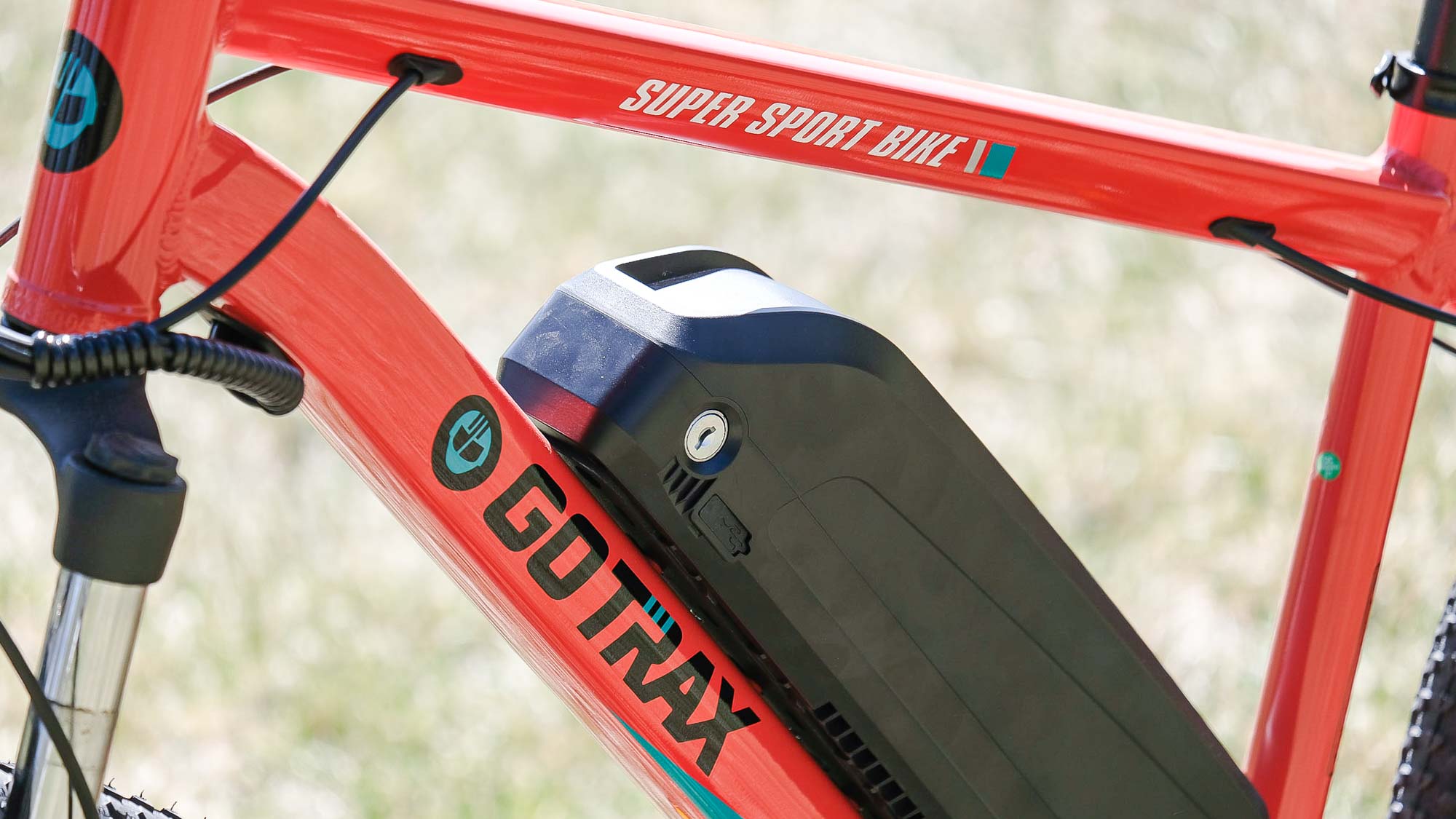
The rear hub motor is controlled by an LED display unit mounted on the handlebars. It’s a very basic display which uses LED lights to indicate your battery charge, assist mode, and head light status (on or off).
Get instant access to breaking news, the hottest reviews, great deals and helpful tips.

You can use the three assist modes using pedal-assist or the handlebar-mounted throttle lever. You can also tailor resistance using the Shimano 7-speed drivetrain. This allows you to change gears, which makes it easier to pedal this bike with or without the assist motor turned on.

The Traveler also features a suspension fork up front. It’s a basic spring fork; this is old technology that has largely been replaced by air and oil forks.
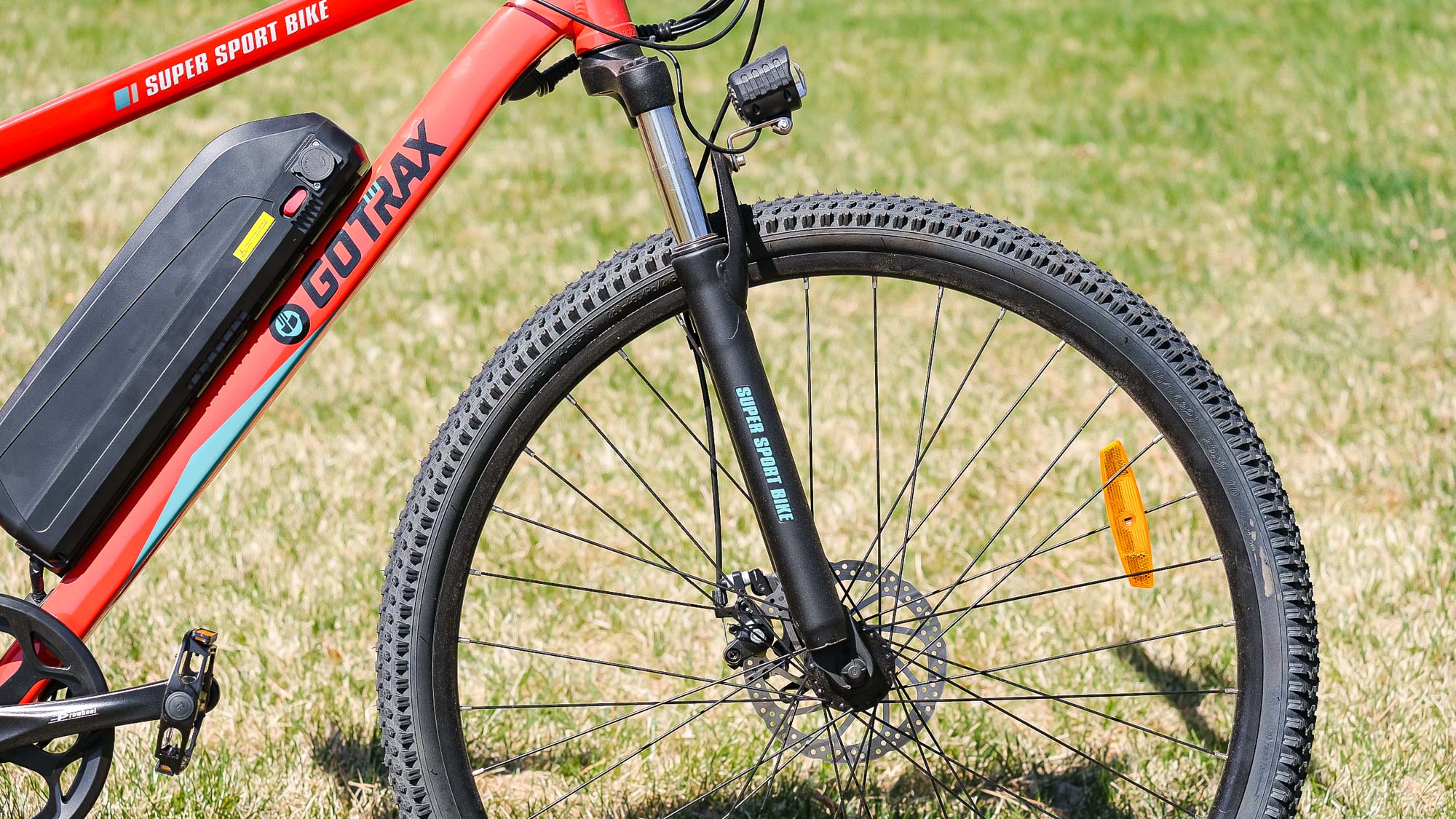
By all appearances, the Traveler is an entry-level mountain bike of the ilk you would find at big box stores. It has 29-inch wheels with tires wide enough to handle off-road use. To further those capabilities, the Traveler comes stock with cable-actuated disc brakes for added stopping power.
Gotrax Traveler review: Performance
It’s clear that Gotrax’s goal with the Traveler e-bike was to keep costs to a minimum. Affordability is perhaps the most important factor for most consumers, so this makes a lot of sense as a design goal.
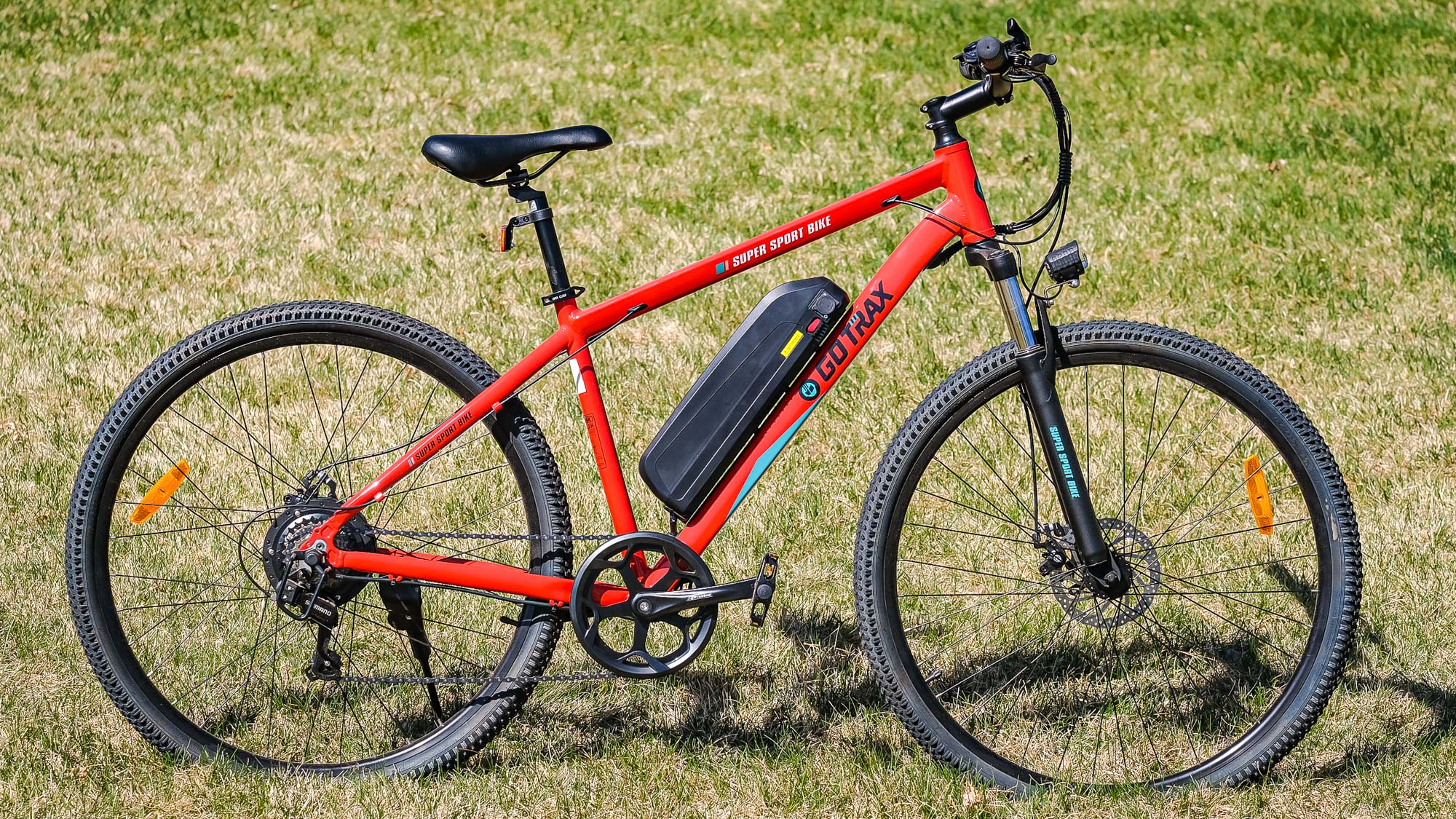
Unfortunately, the Traveler’s build quality goes well below inexpensive to just cheap. The front wheel went out of true almost immediately. The suspension fork flexes significantly fore and aft while you’re riding, and the suspension action is clunky. It doesn’t offer any real benefit and in fact feels a bit dangerous, as though the fork is ready to snap at any moment. When we reached out to Gotrax for comment, a representative said the inclusion of a suspension fork helps fulfill a need for retailers looking for “a solid bike at an affordable price.”

Turning the bike on also takes extra steps. There’s a power button on the battery, and there’s a second power button on the head unit. Both need to be turned on before you can use the motor assist. Gotrax says this ensures the motor doesn’t engage unless it’s supposed to. The button on the display just turns on the display, while the button on the battery turns on the battery itself.

The pedal assist motor also has some significant problems. For starters, it often takes anywhere from four to six full pedal strokes before the assist even kicks in. I have not tested an e-bike with a worse response time. Gotrax says that the Traveler’s assist is supposed to kick in within a half-revolution of the pedals, depending on your assist mode. That was not my experience during testing.

I rode the Traveler mostly in the highest assist setting. The lowest setting did not appear to offer any assistance at all. The middle setting offered some assistance, but not enough for most regular riding situations. Once the assist got going in the highest setting, it felt powerful on flat terrain. The motor has a peak power of 1000 watts, which feels like a good burst at top speed.

But it’s nearly impossible to get the Traveler going from a dead stop on a hill. I tried in all three settings, and at different drivetrain gear settings, and the assist did not kick in quickly enough to offer any benefit. It was possible to get some assist in the highest setting while using the throttle, but this wasn’t enough to get the bike going quickly enough to be practical.
Gotrax Traveler review: Battery life and range
Gotrax advertises that the Traveler’s Lithium-ion 48V, 480Wh battery has a maximum range of 31 miles, which is respectable for a budget electric bike. I rode the Traveler for about five miles on my first ride, using mostly the high setting. I used one out of four of the LED battery indicator lights, so the advertised range seems like a reasonable estimate, depending on which assist mode you use and what terrain you’ll be riding on.
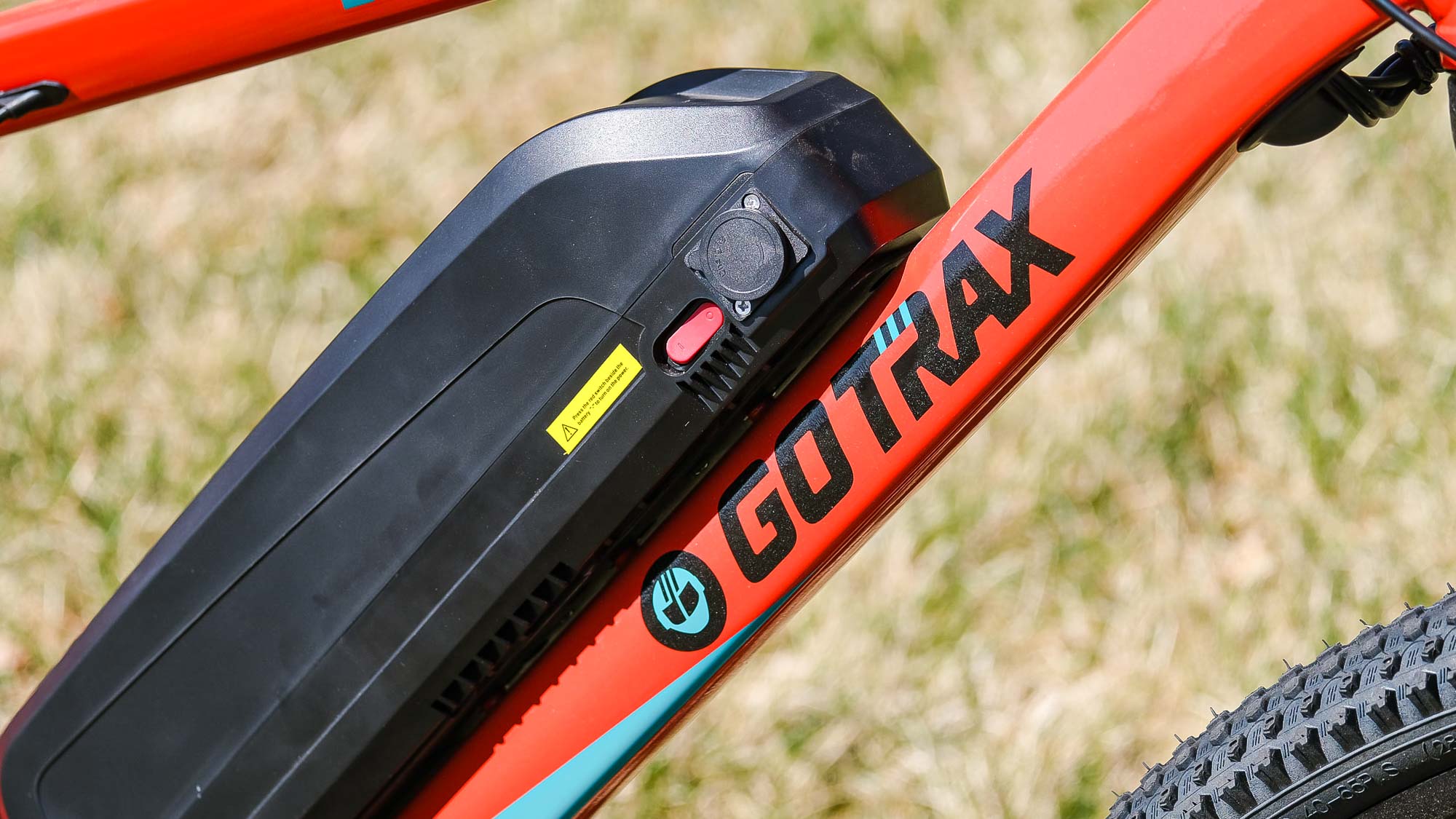
Strangely, the LED lights on the battery itself do not match up to the LED lights on the head unit. While I started my ride with three out of four LEDs lit on the head unit (this was after 4 hours of charging), the battery itself only showed two out of four LEDs. It’s unclear why there are two different battery status indicators in the first place.
Gotrax does not specify what kind of battery the Traveler uses, or what brand makes it. I took off the battery to look for a brand name but could not find one. This may not seem like a big deal, but an e-bike battery’s life and safety can depend largely on its build quality.
Gotrax Traveler review: Accessories
The Gotrax website offers a few accessories, though none are specific to the Traveler. You can buy a helmet through the Gotrax website to go with your bike purchase, and there are apparel options as well.
The Parts heading on the website leads to a “Coming Soon” notification for e-bikes, though there are some parts available for Gotrax’s scooters. I reached out to Gotrax and was told the company expects the accessories to be available in late May.
Gotrax Traveler review: The competition
Where electric bikes were originally quite expensive, you can now find a number of models that cost the same or less than the GoTrax Traveler — and perform better, too.

The Ride1Up Core-5 is a close competitor to the GoTrax Traveler. The Core-5 costs $1,195 and also features a rear hub motor. The Core-5 offers assist speeds up to 28mph, besting the Traveler’s max assist speed of 20mph.
Most importantly, however, the Core-5’s build quality and relative value far exceeds the Gotrax Traveler’s. The Core-5’s battery is integrated into the frame, for example, and the head unit offers far better usability and visibility.
Another option at this price is the Aventon Soltera, which looks great and has a much better display. While the bike feels a little underpowered, it was much more responsive than the Traveler.
While the Gotrax Traveler does have a suspension fork while the Core-5 and the Soltera do not, the Traveler would actually be a better bike without the included suspension.
Gotrax Traveler review: Verdict
I cannot reasonably recommend the Gotrax Traveler. There are plenty of bikes on the market in the same price range that vastly outperform the Traveler and feature a much better overall build.
As they become more popular, electric bikes are coming down in price and sacrificing less in terms of features and quality.
While I don’t think the Traveler is an unsafe bike, it certainly doesn’t inspire confidence as the fork flexes fore and aft and the motor assist consistently underperforms. Avoid the Gotrax Traveler in lieu of something like the Ride1Up Core-5, or any of our other picks on the best budget electric bikes page.

Dan Cavallari is the former technical editor for VeloNews Magazine, who currently reviews electric bikes, bike lights, and other bike accessories for Tom's Guide. In addition to VeloNews, his work has appeared in Triathlete Magazine, Rouleur Magazine, CyclingTips.com, Road Bike Action, Mountain Bike Action, CycleVolta.com, Tomsguide.com, and much more. Dan also hosts two podcasts on his site, Slow Guy on the Fast Ride: One is about cycling and other outdoor activities, while the other looks at mental health issues. Most recently, Dan also covered the 2022 Tour de France. Dan lives outside of Denver, Colorado with his family.
